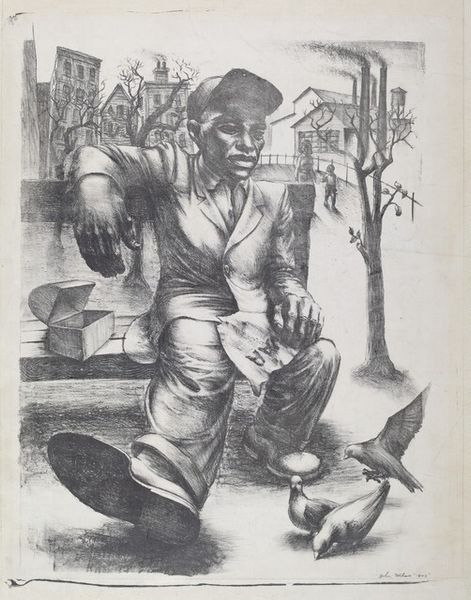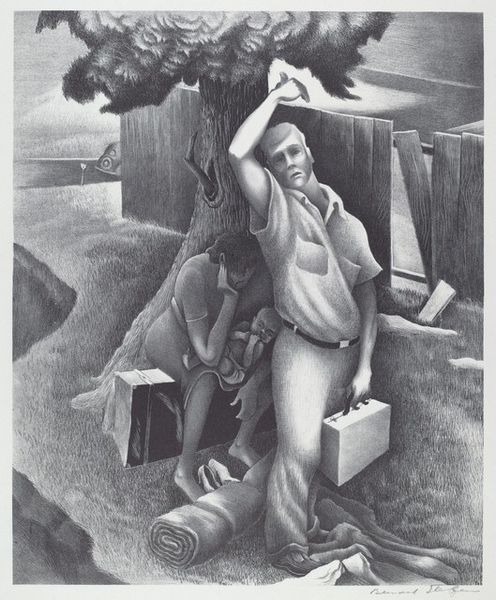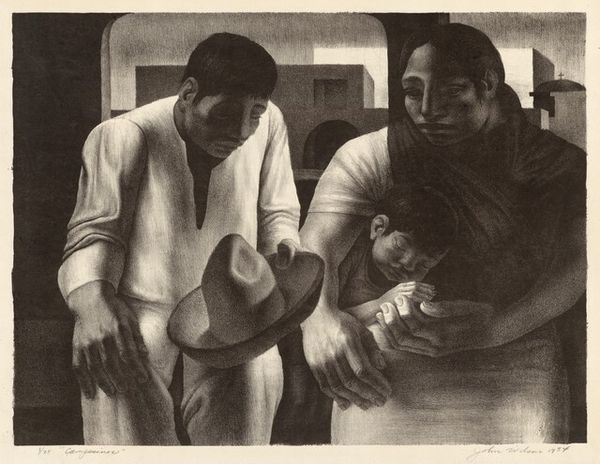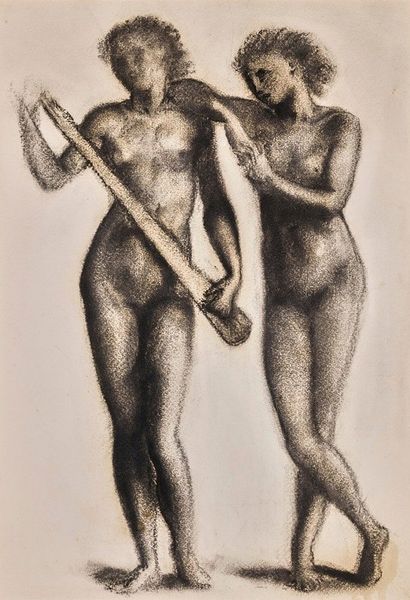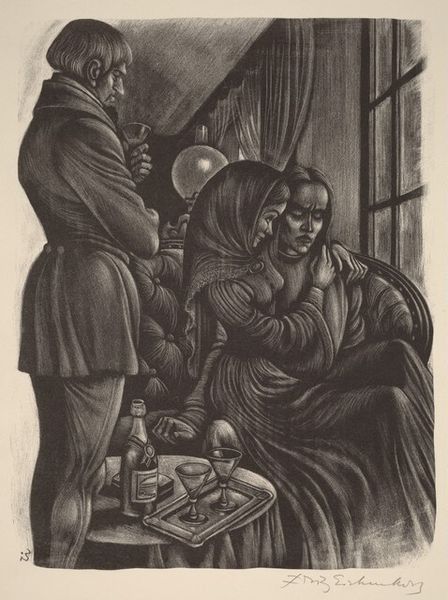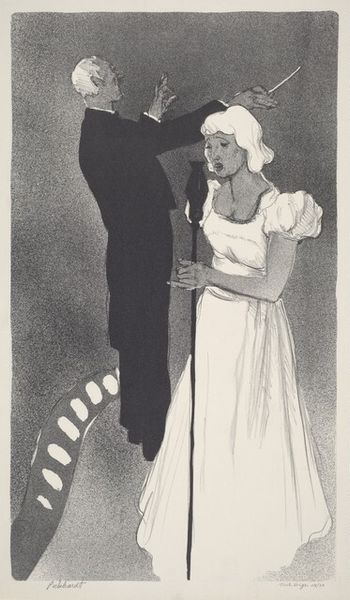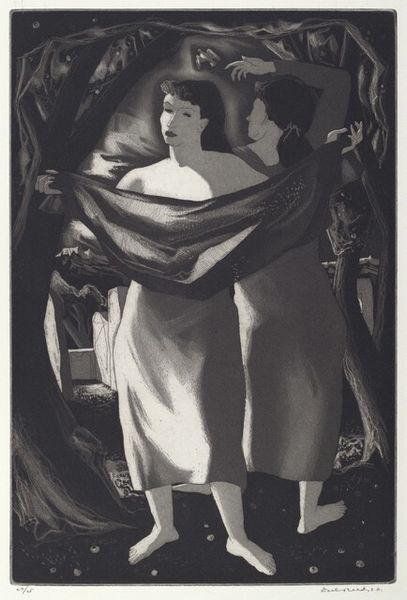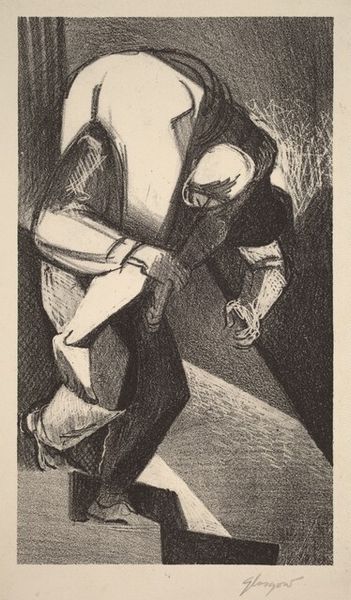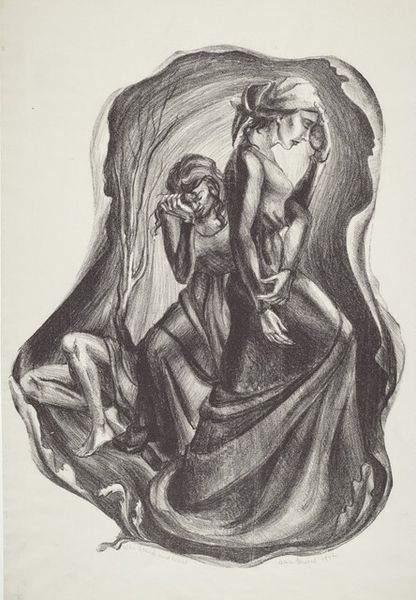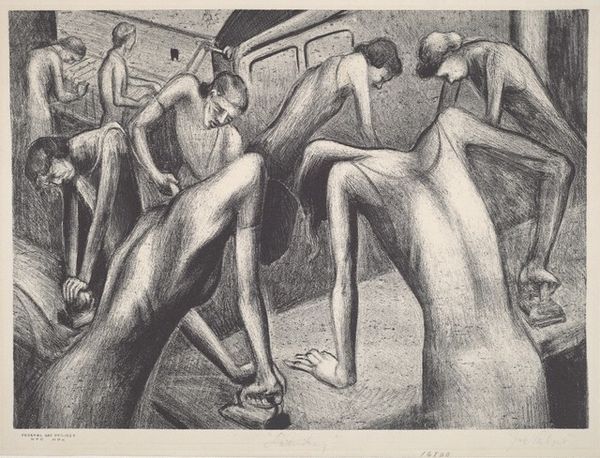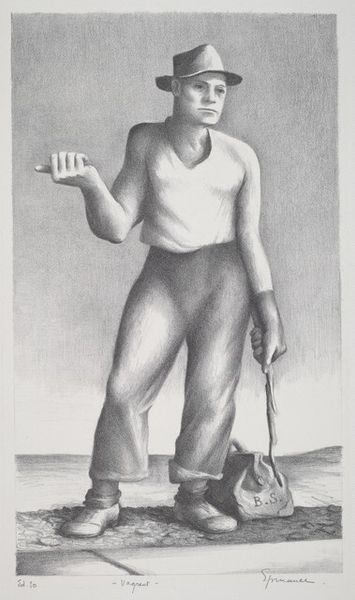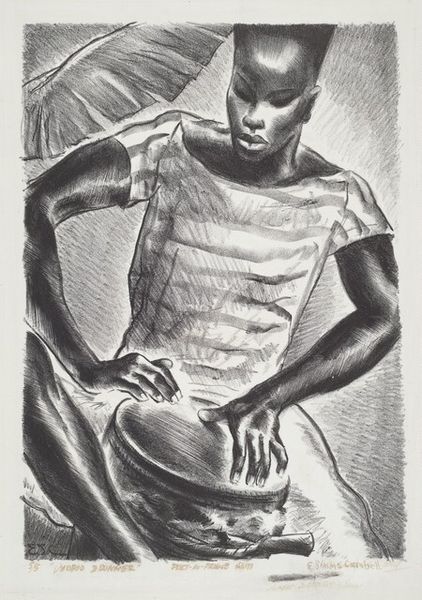
drawing, pencil
#
portrait
#
drawing
#
social-realism
#
pencil
#
genre-painting
#
realism
Dimensions: image: 33.02 × 24.77 cm (13 × 9 3/4 in.) sheet: 40.64 × 29.53 cm (16 × 11 5/8 in.)
Copyright: National Gallery of Art: CC0 1.0
Curator: Conversation Piece, drawn in 1935 by Meyer Wolfe, is a compelling pencil drawing. What’s your initial read on it? Editor: It feels very grounded, both visually and emotionally. I am really drawn to the texture of the pencil strokes, the women's bodies feel solid, and it gives a real sense of a moment captured in time. What do you see? Curator: For me, this drawing embodies the spirit of Social Realism, a movement deeply invested in representing the lives of everyday people, especially during the Depression era. Consider the women’s clothing and the somewhat desolate landscape. What do these details suggest about the socio-economic context in which Wolfe created this work? Editor: They're dressed plainly but warmly, hinting at resilience amidst hardship. And the muted background makes me think they live in a world drained of optimism at the time. Curator: Exactly! Wolfe subtly inserts a poignant commentary on race and class. The act of depicting these women having a seemingly ordinary conversation challenges the prevailing stereotypes and invisibility often imposed on marginalized communities. Have you noticed the lone male figure standing behind? Editor: Now that you point it out, I see him and feel more clearly how this encounter holds greater purpose for these women and represents a bigger societal portrait of isolation. Curator: Perhaps Wolfe meant for him to represent a third party witnessing this unique moment between the women. How can images like these offer insights into social dynamics of their time? Editor: Artworks like this force us to confront the forgotten corners of history, making me consider the agency and resilience of marginalized figures. Curator: It’s in those corners where we find the rawest, most honest depictions of humanity. This piece can certainly spark necessary discussions about representation and social justice, not just in the 1930s, but today. Editor: Thank you. Now I better appreciate how Wolfe is capturing intersectional lives.
Comments
No comments
Be the first to comment and join the conversation on the ultimate creative platform.
